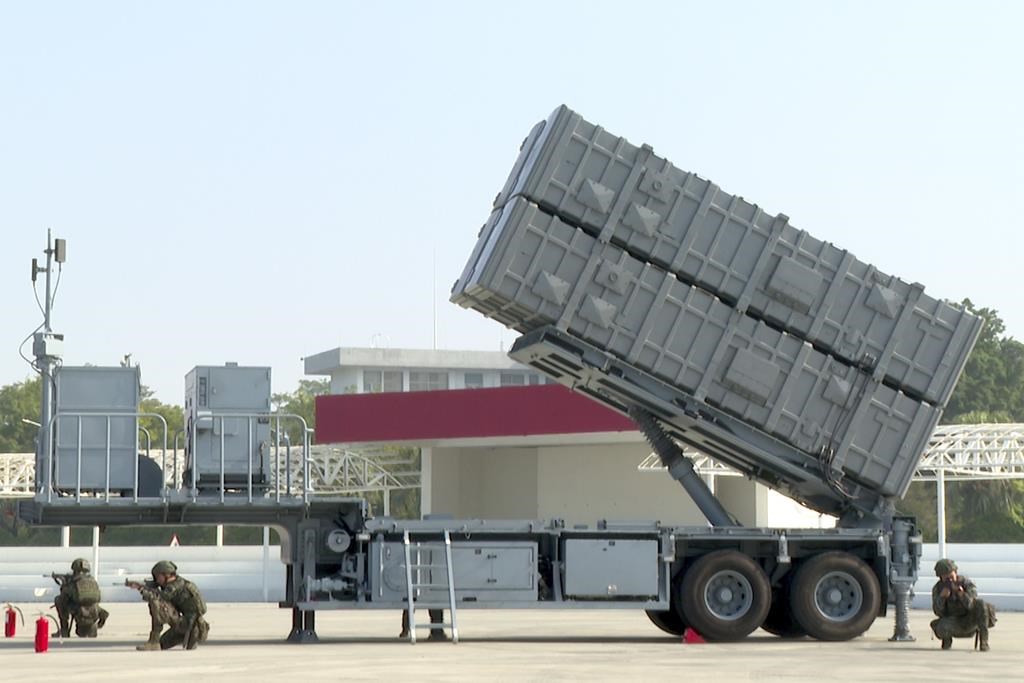KAOHSIUNG, Taiwan — Almost every day, Chinese warships sail in waters around Taiwan and warplanes fly toward the island before turning back. What if they suddenly attacked?
Taiwan’s military was concluding a two-day exercise at sea and in the air on Wednesday to practice defending against such a surprise attack. Journalists observed the training from fast boats that escorted a mine-laying ship.
“Any unilateral irrational action could very easily escalate tensions and sabotage stability in the Taiwan Strait region,” Maj. Gen. Sun Li-fang, a defense ministry spokesperson, told reporters at Tsuoying Naval Base in southern Taiwan.
China claims the self-governing island of 23 million people as its own territory and says it must come under Beijing’s control. The long-running divide is a flashpoint in U.S.-China relations. As relations between the rivals have deteriorated in recent years, fears have grown that America could get pulled into a war if hostilities break out.
Taiwan’s defense ministry, in a daily report, said that seven Chinese warplanes and four naval vessels were detected around the island in the 24-hour period ending at 6 a.m. on Wednesday. It also reported a Chinese balloon off its northern coast.
The annual exercise comes less than three weeks after voters elected Lai Ching-te as their next president, giving a third straight four-year term to the independence-leaning Democratic Progressive Party, which is opposed by China.
The drills are aimed in part at boosting public confidence in the island’s ability to defend itself.
While its military is dwarfed by China’s, Taiwan has been buying high-tech weaponry from the United States, revitalized its domestic arms industry and extended the length of mandatory military service from four months to one year.
In another sign of the tensions across the Taiwan Strait, the island’s government protested Tuesday after China’s aviation authority announced changes to a southbound route for passenger flights that is expected to bring planes closer to Taiwan’s shores.
Taiwan first objected to the flight path when it was opened in 2015, citing air safety and sovereignty concerns, and China agreed to move the route seven miles (11 kilometers) closer to its side. But China’s Civil Aviation Administration said it would cancel the “offset measure” starting Thursday.
China also said that planes would be allowed to join the flight path from two coastal cities across from Taiwan. Previously, planes were allowed to use the flight path to reach those cities, but could not join it from them, which entails flying toward Taiwan.
Taiwan’s Civil Aviation Administration strongly protested the move, which it said “blatantly contradicts a consensus reached between both sides … in 2015,” according to Taiwanese media.
A Chinese government spokesperson called the changes routine and said they were meant to ease air traffic and ensure flight safety in a crowded flight corridor.






